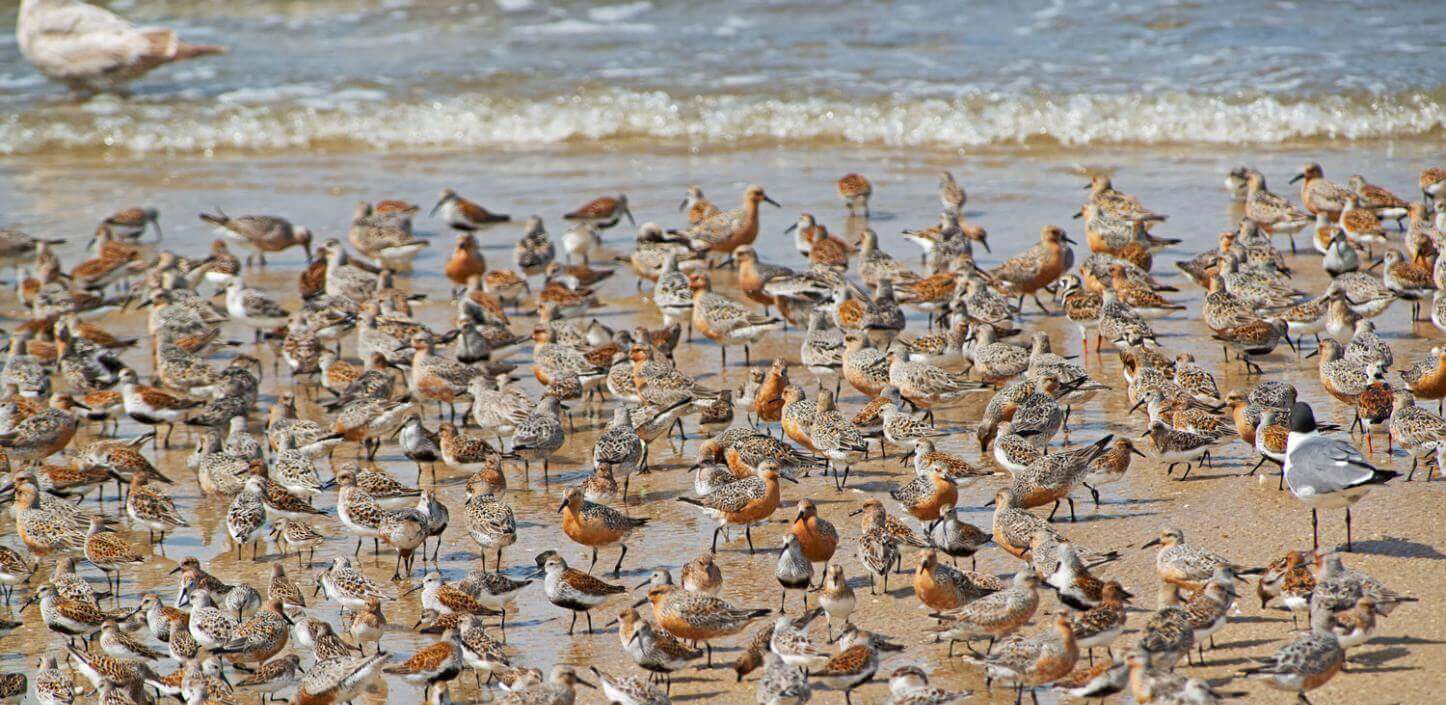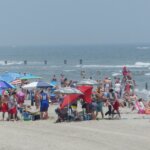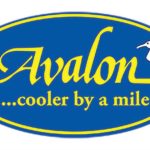REED’S BEACH – Visitors to nine Delaware Bay beaches May 7-June 7 may notice more volunteers protecting migrating shorebirds and horseshoe crabs to minimize disturbances during spring, when red knots try to fatten for their trek to the Arctic.
Thanks to an $86,700 grant from the National Fish and Wildlife Foundation (NFWF) to expand the existing shorebird stewardship program in the Delaware Bay, visitors will be shepherded to viewing stands and potentially learn about the importance of shorebirds and horseshoe crabs, along with the restoration being done to the beaches, oyster reefs and berms in the bay.
In Cape May County, the affected beaches include Reed’s, Cook’s, Kimbles, and Thompson’s beaches.
The grant was awarded to the American Littoral Society (ALS), working with its partners from Wildlife Restoration Partnerships, Conserve Wildlife Foundation of New Jersey, and New Jersey Division of Fish and Wildlife.
As part of the grant, they intend to:
* Create several one-minute videos and media publications that will be used as outreach for the community.
* Build upon the existing shorebird stewardship program and create a more robust team of volunteers.
* Prevent human disturbance during the shorebird season at critical beaches while educating the public on the significance.
* Work with municipalities and regulators to create ordinances to further protect the beaches from disturbance.
“We are getting more people involved,” explained Capt. Alek Modjeski, habitat restoration program director, ALS. “We want to engage people in a positive way. We are all glad to see the shorebird migration, and we’ve been restoring the beaches for the horseshoe crabs to lay their eggs, so we all want to see as much produced as possible, minimizing disturbances.”
“The shorebirds, especially the red knots, have basically three weeks to double their weight, and we only have about one-third of the carrying capacity of eggs, so it’s really important that we don’t disturb the feeding birds and crabs,” added Stephanie Feigin, wildlife ecologist and partner, Wildlife Restoration Partnerships.
“During this pandemic, a lot of people have gotten back to nature and are spending more time outside,” she said. “People talk about hearing birds in places they hadn’t before. People are realizing and appreciating nature and wildlife a lot more, so it’s great this phenomenon is happening in our backyard, but we need to protect it.”
The Delaware Bay hosts the world’s largest Atlantic horseshoe crab population, according to Quinn Whitesall, habitat restoration coordinator and stewardship program manager, ALS.
In the 1990s, horseshoe crab egg densities were estimated on most Delaware Bay beaches at over 100,000 per square meter. By 2000, densities fell to less than 5,000 eggs per square meter and remain near that level to date.
“During May and June, millions of horseshoe crabs trek to the shallow-sloped beaches of the Delaware Bay to spawn,” she said. “This yearly spawning ritual results in masses of horseshoe crab eggs in upturned ribbons along the beaches that provide a critical food source for migratory shorebirds, including the federally listed red knot.”
When the shorebirds arrive at the Delaware Bay, they are vulnerable to a wide range of threats, including habitat loss, changing climates and human disturbance.
“It is imperative that the birds spend the limited amount of time they have to feed on horseshoe crab eggs and meet the weight threshold that will sustain their journey to the Arctic breeding grounds,” Whitesall said. “Providing this information to the public about how important these beaches and horseshoe crab eggs are to their survival and the Delaware Bay ecosystem as a whole is a primary goal of the stewardship program.”
Since 2003, shorebird stewards have been volunteering to help protect shorebirds on nine closed beaches along the Delaware Bay, in New Jersey.
Restricted beaches are roped off and posted with “no entry” signs, while viewing areas are established at different locations along the bay where birds will not be disturbed.
“Since ropes and signs do not always keep people from entering the restricted areas, the shorebird steward project was created to provide for personal interaction between those protecting the birds and those coming to enjoy the beach,” Whitesall said.
“The first few years of the beach closures were the most challenging, with regard to the public’s attitude towards the restricted area,” she noted. “As people become more educated and aware of the restricted areas, they have become more supportive. This increase in positive attitude towards beach restrictions can be attributed to shorebird stewards’ success in nurturing a greater understanding of the public’s role in migratory shorebird protection over the past 12 years.”
Although volunteer spots are full for the season, those interested in a stewardship spot can email quinn@littoralsociety.org.
To contact Karen Knight, email kknight@cmcherald.com.








